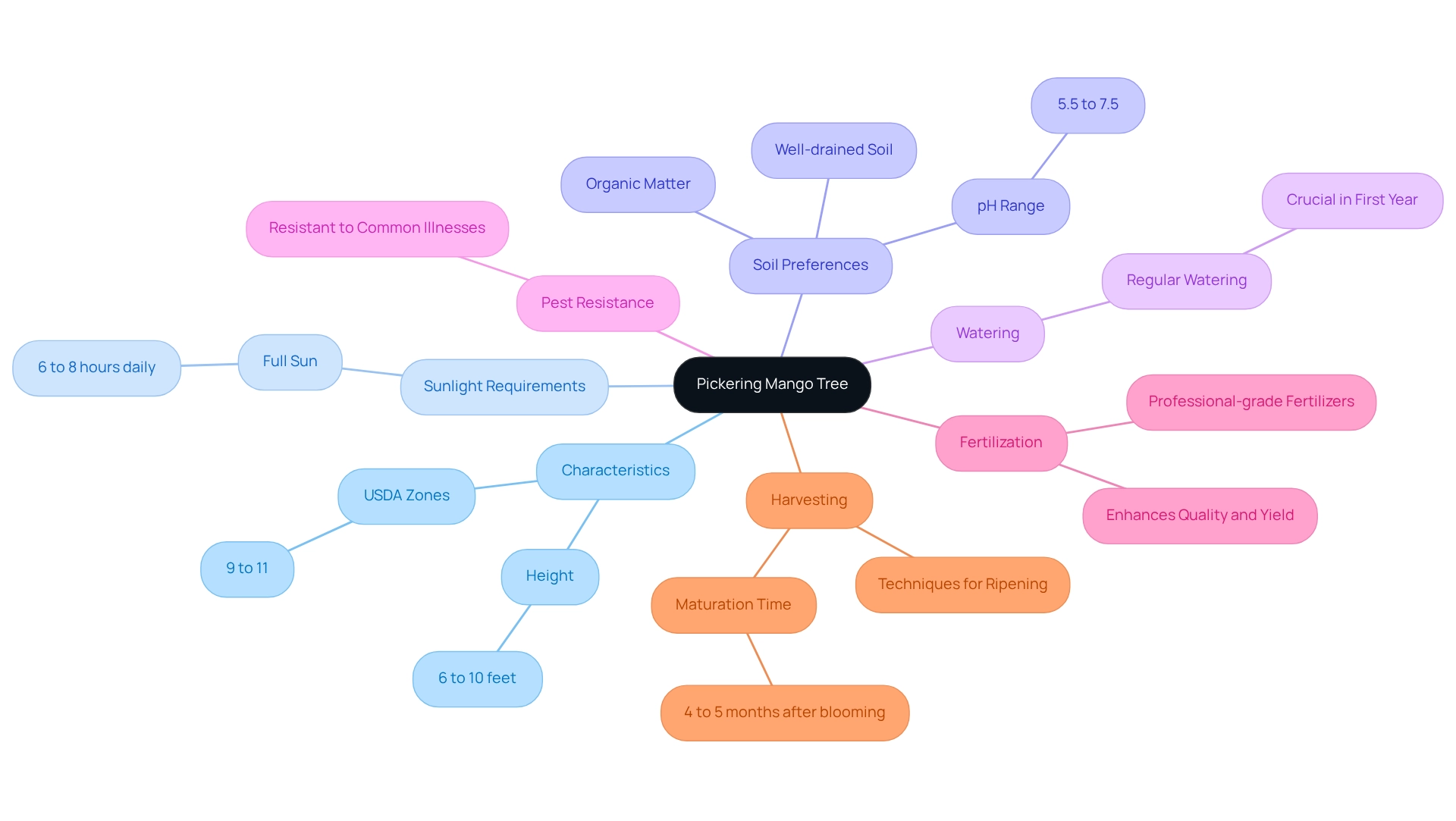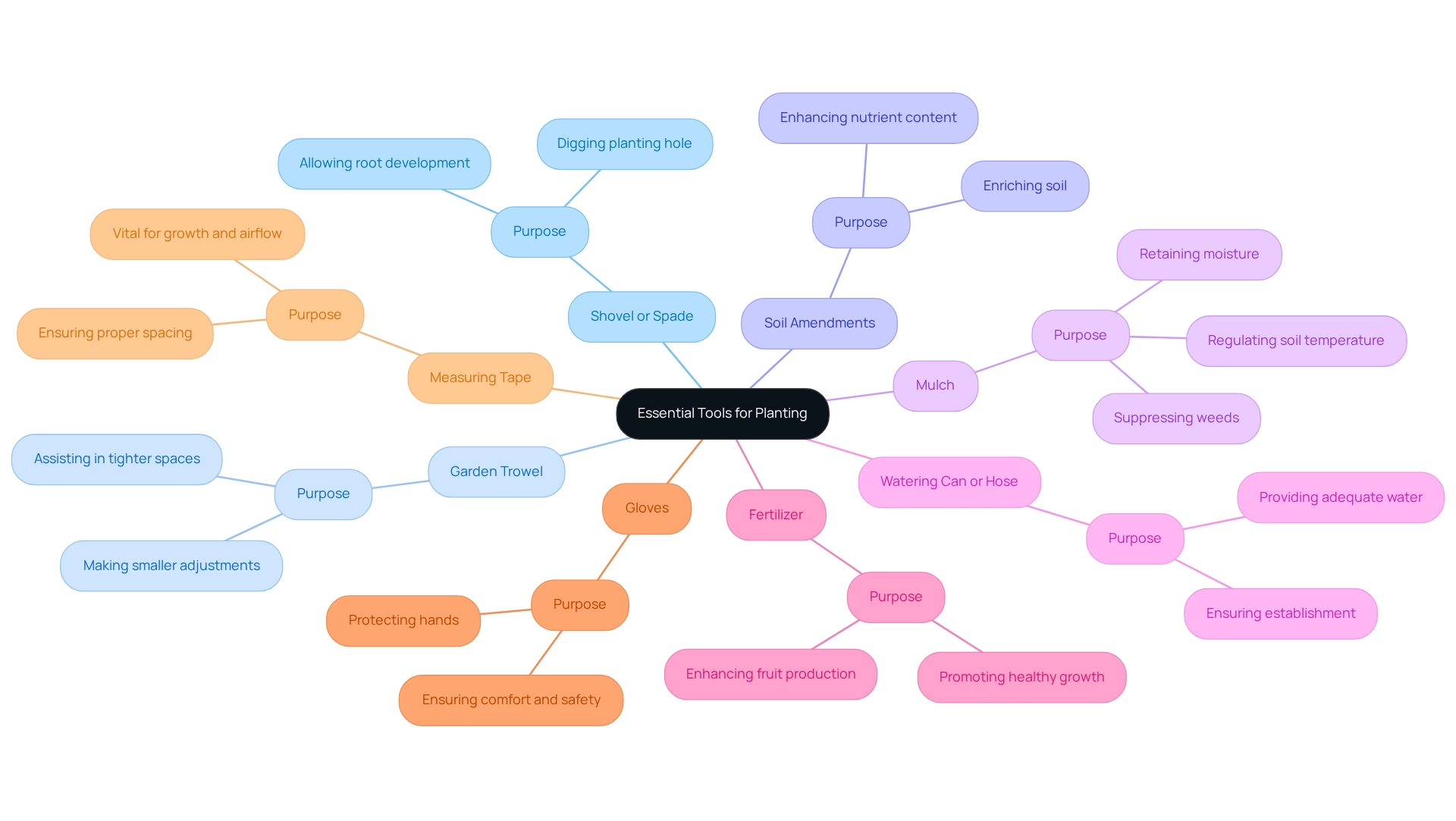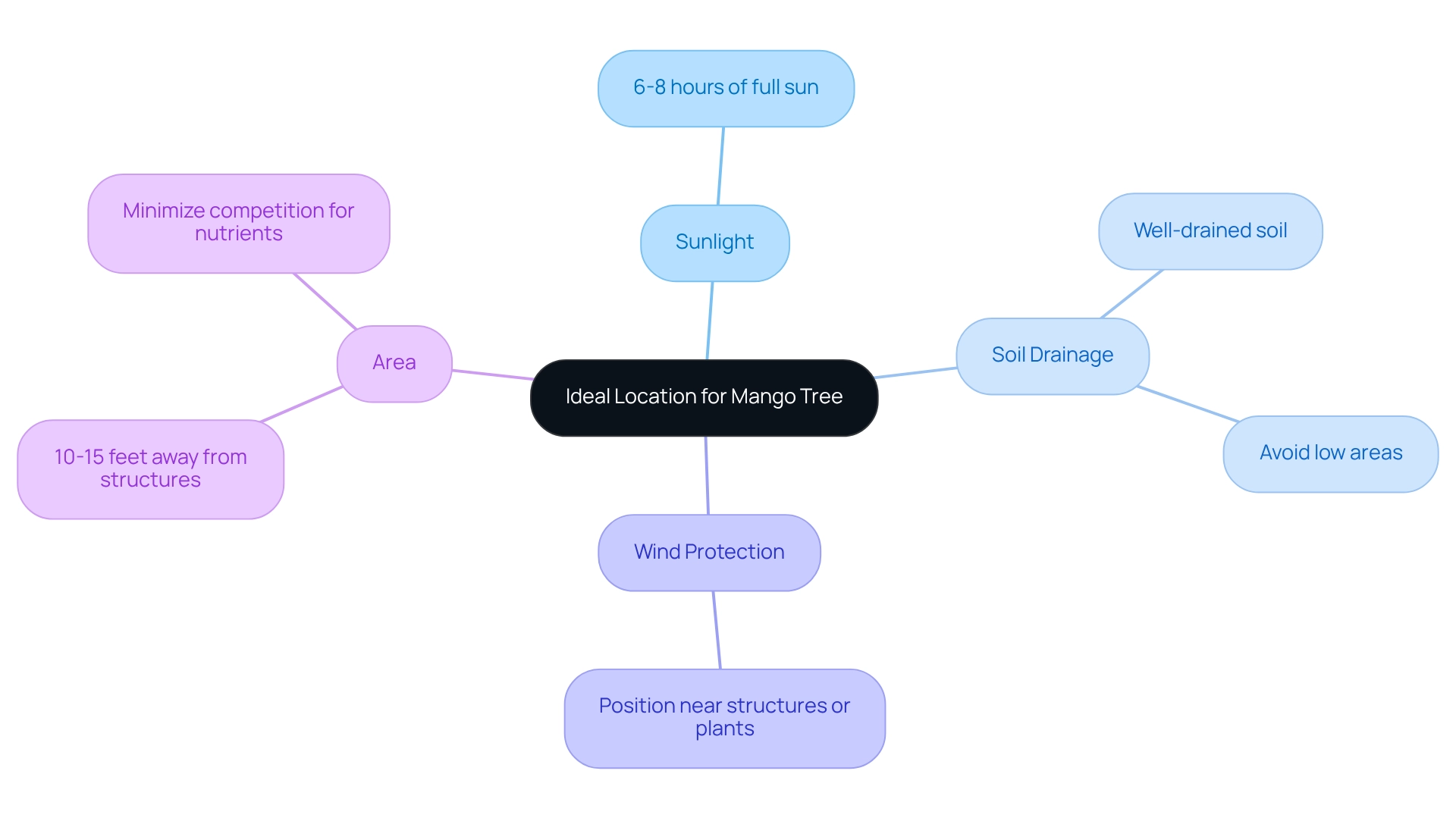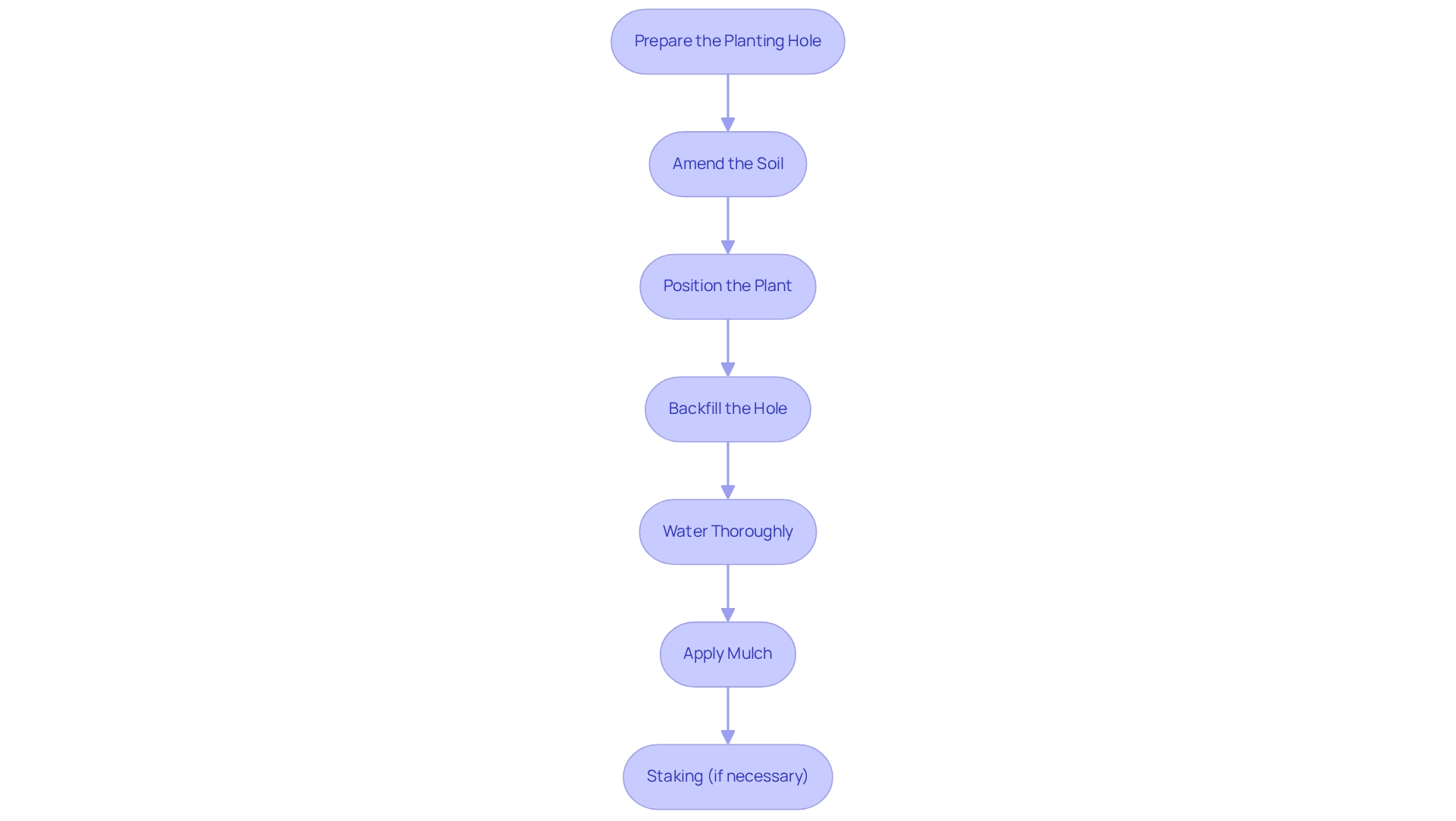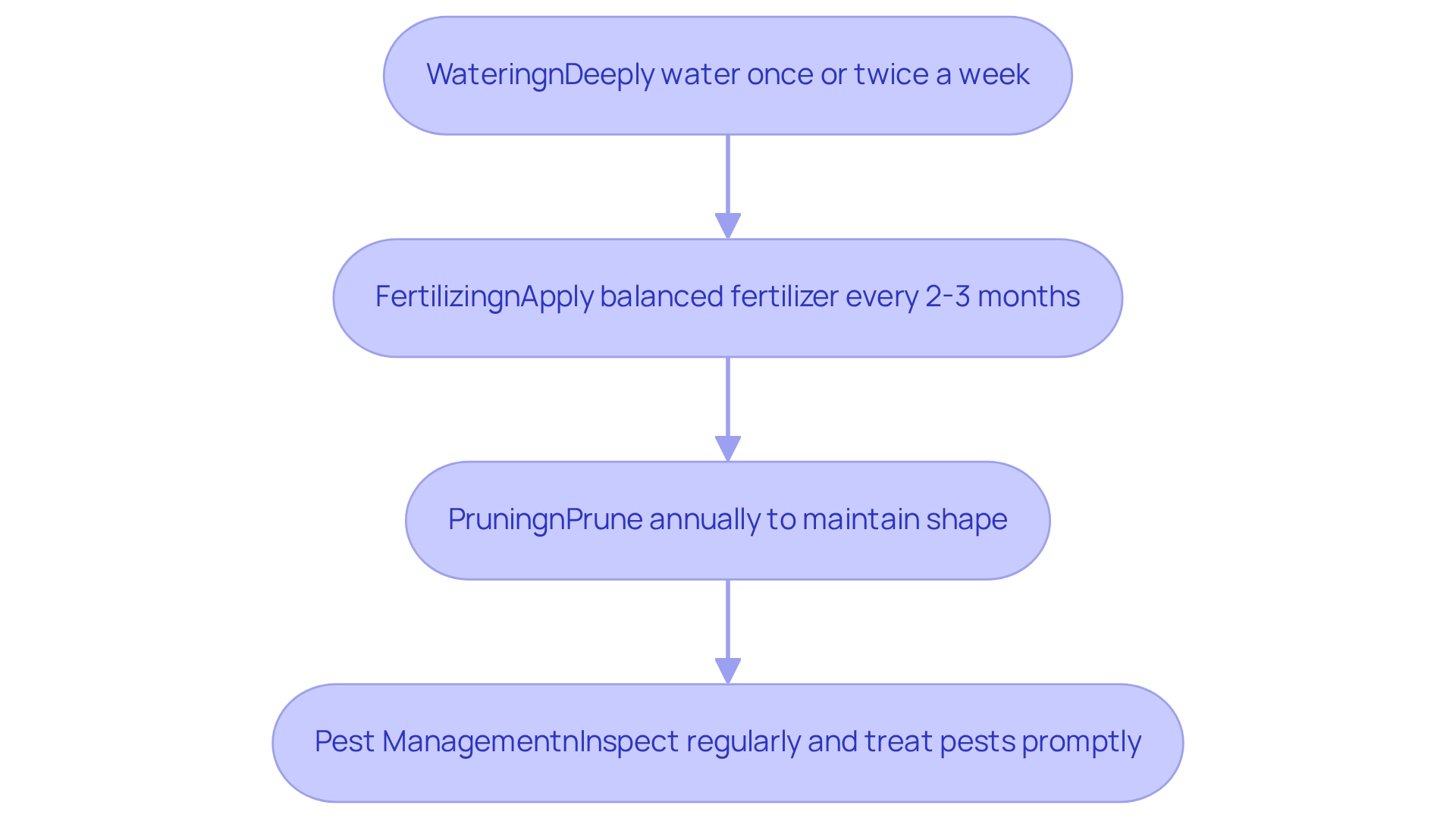In the world of home gardening, few trees can inspire as much joy as the Pickering mango tree. This charming, compact variety is perfect for smaller spaces, and it offers some of the sweetest, most delightful fruit you can imagine. Thriving in warm climates, the Pickering mango tree needs just the right conditions to flourish—think plenty of sunlight and well-drained, nutrient-rich soil.
Have you ever wondered how to bring such a vibrant addition to your garden? With a few expert tips on planting, ongoing care, and effective maintenance, you can cultivate this lovely tree in your tropical landscape. Imagine the satisfaction of enjoying bountiful harvests and a garden that bursts with life. Let’s explore how you can make this dream a reality, ensuring a rewarding gardening experience that nurtures both your plants and your spirit.
Understand the Pickering Mango Tree: Characteristics and Requirements
The compact, dwarf variety known as the pickering mango tree, Mangifera indica, is a delightful choice for home gardens and smaller spaces, typically reaching a height of 6 to 10 feet. This manageable size not only makes maintenance and harvesting easy but also invites gardeners to enjoy the fruits of their labor. Thriving in USDA zones 9 to 11, this fruiting plant loves full sun, requiring at least 6 to 8 hours of sunlight each day to produce its sweet, flavorful offerings.
For optimal growth, it's essential to provide well-drained soil that is slightly acidic to neutral, with a pH range of 5.5 to 7.5, enriched with organic matter. Regular watering is crucial, especially during the first year, as it helps establish a robust root system. What’s truly remarkable is that this mango variety exhibits resistance to common illnesses, further enhancing its appeal as a
resilient option for gardeners.
Experts suggest that regularly removing suckers from the base of the plant can significantly redirect energy towards fruit production, boosting your yield. Additionally, home gardens showcasing these varieties demonstrate that with proper care and attention, you can enjoy bountiful harvests, solidifying this plant's reputation as a valuable addition to any tropical garden. Everglades Farm also offers a selection of other tropical plants, expanding your gardening possibilities.
Moreover, proper fertilization methods are vital for the health and productivity of these plants. By utilizing Everglades Farm's professional-grade fertilizers, you can greatly enhance the quality and yield of the pickering mango tree, making it an even more rewarding option for your garden. If you're considering adding this charming variety to your collection, Everglades Farm provides complimentary shipping on orders over $54.95 for Florida residents, making it easier to welcome this lovely plant into your home.
Remember, the fruit typically matures 4 to 5 months after blooming, so a bit of patience will be rewarded with delicious produce. Together, let's cultivate a thriving garden that brings joy and nourishment to your life.
Gather Essential Tools and Materials for Planting
Before planting your Pickering mango tree, let’s gather some essential tools and materials to ensure a successful planting experience together:
-
Shovel or Spade: This is necessary for digging the planting hole, allowing for adequate space for root development of your Pickering mango tree.
-
Garden Trowel: Perfect for making smaller adjustments and assisting with the planting process of your Pickering mango tree in tighter spaces.
-
Soil Amendments: Incorporating compost or well-rotted manure enriches the soil for your Pickering mango tree, enhancing its nutrient content and structure. Expert recommendations indicate that these amendments are essential for the healthy establishment of mango plants.
-
Mulch: Using organic mulch helps retain moisture, suppress weeds, and regulate soil temperature, creating a favorable environment for growth.
-
Watering Can or Hose: These are essential for providing adequate water to the plant right after planting, ensuring it establishes well.
-
Fertilizer: Opt for a balanced fertilizer with a higher potassium content (e.g., 8-3-9) to promote healthy growth and fruit production.
-
Gloves: Protect your hands while working with soil and plants, ensuring comfort and safety during the planting process.
-
Measuring Tape: This is important for ensuring proper spacing if planting multiple plants, which is vital for their growth and airflow.
The demand for innovative and environmentally friendly gardening tools is on the rise, reflecting a cultural trend toward sustainable living that has gained momentum, especially during the pandemic. Having these tools ready will streamline the planting process and significantly improve the chances of your plant thriving in its new environment. Remember, every step you take in preparing to plant is a step towards nurturing life and beauty in your garden.
Choose the Ideal Location for Your Mango Tree
To ensure the thriving of your pickering mango tree, let’s consider some essential factors when selecting the perfect planting location.
-
Sunlight: It’s vital to choose a site that bathes in full sun for at least 6 to 8 hours each day. This abundant sunlight is crucial for robust fruit production, as it directly influences the health and yield of your plant.
-
Soil Drainage: Make sure the area boasts well-drained soil to prevent root rot, a common concern for mango plants. Steer clear of low-lying regions where water tends to pool, as poor drainage can significantly impact your plant's vitality. Studies show that the variation coefficient for all tested fruit plants was around 7%, underscoring the importance of providing proper care and conditions for optimal growth.
-
Protection from Wind: If you can, position your mango plant near a structure or other plants that can serve as a windbreak. Strong winds can be detrimental to young plants, stunting their growth and fruiting potential.
-
Area: Ensure there’s ample space for your plant to flourish. Ideally, plant it at least 10 to 15 feet away from structures or other plants to minimize competition for nutrients and sunlight.
As Gary Gao, Ph.D., an Associate Professor and Small-Fruit Extension Specialist, wisely notes, "Without adequate and appropriate attention for plants, produce quality will be quite poor." By thoughtfully selecting the right spot for your pickering mango tree, you can greatly enhance the chances of it thriving, leading to a rewarding and fruitful gardening experience. Moreover, understanding water relations is key to improving irrigation management and boosting fruit productivity under water stress conditions, as discussed in the chapter on 'Water Relations in Fruit Production.
Plant Your Pickering Mango Tree: Step-by-Step Instructions
To successfully plant your pickering mango tree, let’s explore some essential steps together:
-
Prepare the Planting Hole: Begin by digging a hole that is 2 to 3 times wider than the root ball and of equal depth. This allows the roots to spread easily, establishing a strong foundation for your plant’s growth.
-
Amend the Soil: Enhance the excavated soil by mixing in compost or well-rotted manure. This simple yet effective step improves fertility and drainage, both crucial for healthy root development.
-
Position the Plant: Center the mango plant in the hole, ensuring the top of the root ball sits slightly above ground level. This positioning helps prevent water from pooling around the trunk, reducing the risk of rot and ensuring your plant thrives.
-
Backfill the Hole: Carefully fill the hole with the amended soil, gently tamping it down to eliminate air pockets. Be cautious not to compact the soil too much, as this can hinder root growth and overall health.
-
Water Thoroughly: After planting, hydrate the plant deeply to help settle the soil around the roots. Ensure that the water penetrates the root zone effectively, nurturing your plant’s foundation.
-
Apply Mulch: Add a layer of mulch around the base of the plant, keeping it a few inches away from the trunk. This practice retains moisture and suppresses weed growth, creating a healthier environment for your tree.
-
Staking (if necessary): If your pickering mango tree is tall or situated in a breezy location, consider staking it for support until it develops a strong root system.
By following these nurturing recommendations, you will create an ideal environment for your pickering mango tree, encouraging healthy growth and a bountiful yield. Remember, gardening is a journey we embark on together, and every step you take is a step toward a flourishing garden.
Provide Ongoing Care: Watering, Fertilizing, and Pruning
To help your Pickering mango tree thrive and produce delicious fruit, let’s explore some ongoing care guidelines that will nurture both you and your tree:
-
Watering: Deeply water your tree once or twice a week, allowing the top 2 to 3 inches of soil to dry out between waterings. In the first month, consider increasing the frequency to help establish strong roots. Think of it as giving your plant a refreshing drink to build its foundation.
-
Fertilizing: After the first month, introduce a balanced fertilizer rich in potassium. Apply it every 2 to 3 months during the growing season—spring and summer—encouraging robust growth and fruitful yields. This is like giving your plant the nutrients it craves to flourish.
-
Pruning: Each year, take a moment to prune your mango tree, preserving its shape and fostering branching. Remove any dead or diseased branches, and thin out crowded areas to enhance air circulation. This care is akin to giving your plant a gentle haircut, allowing it to breathe and grow.
-
Pest Management: Regularly inspect your plant for pests like aphids or mealybugs. If you spot any, treat them promptly with insecticidal soap or neem oil. Additionally, keep an eye out for flies and consider using traps to minimize damage. By staying vigilant, you create a healthy environment for your Pickering mango tree, much like protecting a cherished friend.
By providing consistent and loving care, your Pickering mango tree will not only survive but thrive, rewarding you with delicious fruit for years to come. Together, let’s
nurture this beautiful journey of growth!
Conclusion
The Pickering mango tree is truly a delightful addition to any home garden, especially for those of us with limited space. This compact variety not only yields luscious fruit but also thrives under specific conditions: ample sunlight, well-drained soil, and regular care. By understanding its unique characteristics and requirements, we can set the stage for a truly fruitful experience.
Successful planting begins with thorough preparation. Gathering essential tools, amending soil, and selecting the ideal location are all crucial steps. By following step-by-step planting instructions, we can ensure that the tree establishes a strong foundation. Ongoing care—encompassing proper watering, fertilizing, and pruning—plays a vital role in maintaining the tree's health and productivity. Regularly monitoring for pests and diseases further nurtures a robust growing environment.
Ultimately, with dedication and attention to detail, cultivating a Pickering mango tree can lead to bountiful harvests and a vibrant garden. This rewarding endeavor not only enhances the beauty of our outdoor spaces but also brings the joy of homegrown fruit. Embrace the journey of nurturing this charming tree, and savor the sweet rewards it brings. Together, let's create a flourishing garden that reflects our love for nature and the satisfaction of growing our own food.
🌿 Ready to Grow Your Own Mango Tree?
The Pickering mango is a low-maintenance, high-reward addition to any garden. With the right planting spot, basic tools, and consistent care, you’ll be harvesting delicious, tropical fruit in no time.
🌱 Order Your Pickering Mango Tree Today — and start your home orchard with Everglades Farm.
🔗 Explore More:
Frequently Asked Questions
What is the Pickering mango tree, and what are its growing requirements?
The Pickering mango tree, or Mangifera indica, is a compact, dwarf variety ideal for home gardens, typically growing 6 to 10 feet tall. It thrives in USDA zones 9 to 11, requires full sun (6 to 8 hours of sunlight daily), and prefers well-drained, slightly acidic to neutral soil with a pH of 5.5 to 7.5.
How should I care for a Pickering mango tree to ensure optimal growth?
To ensure optimal growth, provide well-drained soil enriched with organic matter, water regularly—especially during the first year—and remove suckers from the base to redirect energy towards fruit production. Proper fertilization with professional-grade fertilizers is also essential for health and productivity.
What tools do I need for planting a Pickering mango tree?
Essential tools for planting a Pickering mango tree include a shovel or spade, garden trowel, soil amendments (like compost), mulch, a watering can or hose, a balanced fertilizer with higher potassium content, gloves, and measuring tape for proper spacing.
How long does it take for the fruit of the Pickering mango tree to mature?
The fruit of the Pickering mango tree typically matures 4 to 5 months after blooming.
Is the Pickering mango tree resistant to diseases?
Yes, the Pickering mango tree exhibits resistance to common illnesses, making it a resilient option for gardeners.
What are the benefits of using mulch when planting a Pickering mango tree?
Using organic mulch helps retain moisture, suppress weeds, and regulate soil temperature, creating a favorable environment for growth.
Are there any shipping offers for purchasing a Pickering mango tree from Everglades Farm?
Yes, Everglades Farm offers complimentary shipping on orders over $54.95 for Florida residents, making it easier to purchase and plant a Pickering mango tree.

